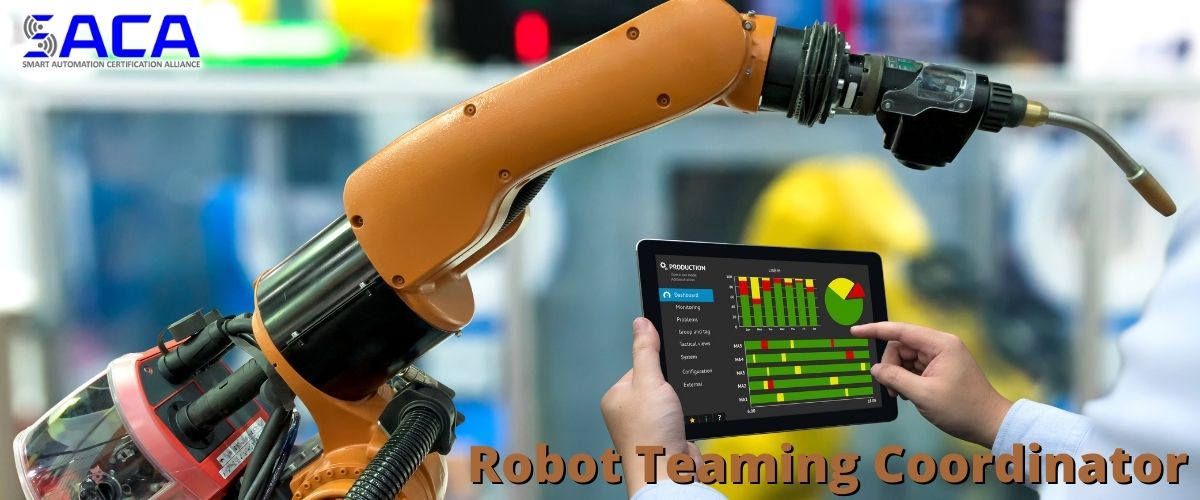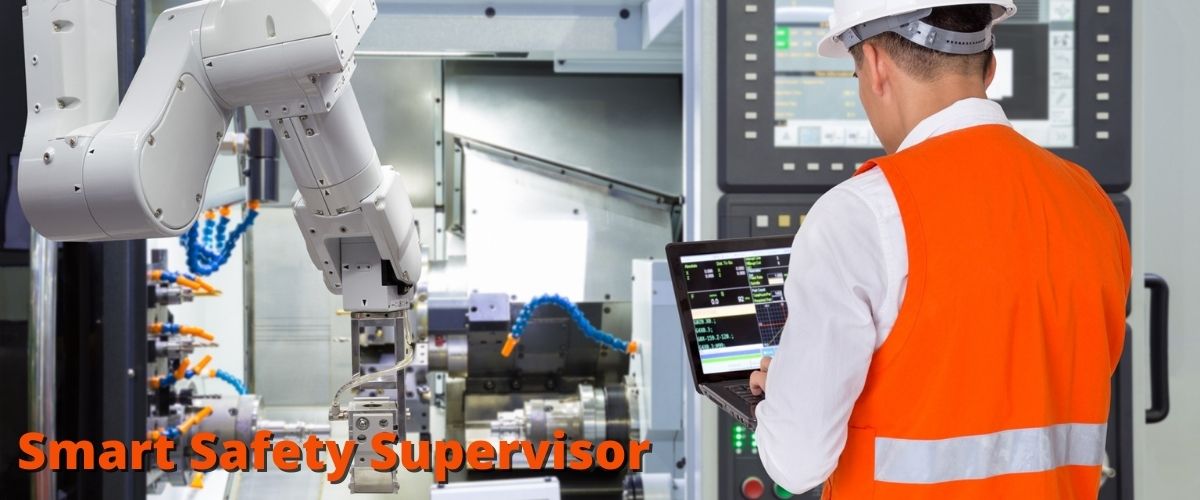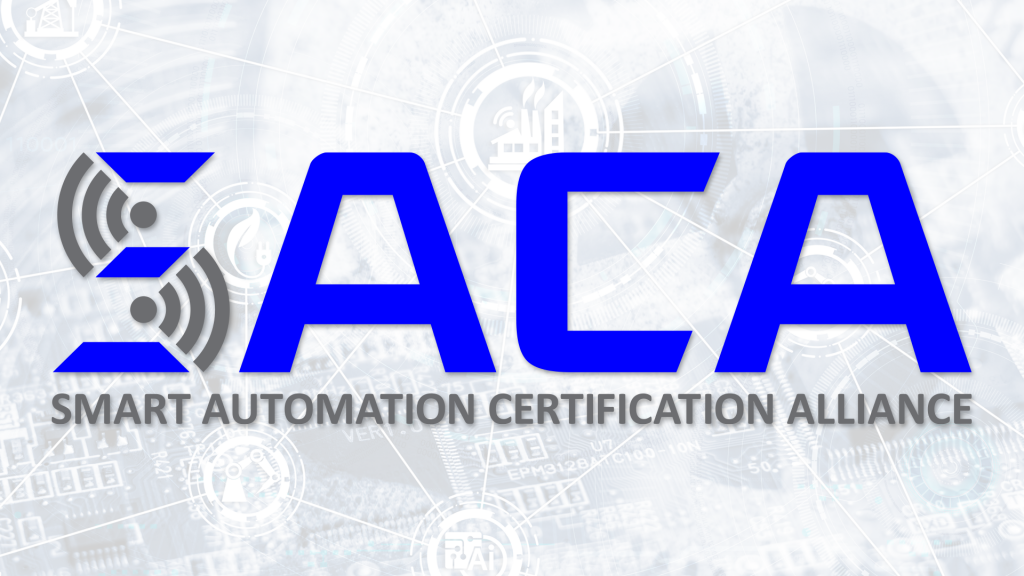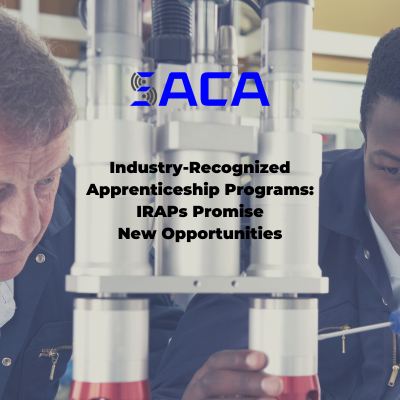Top 5 Future Smart Automation Careers in Manufacturing
Oh, how five years can change things.
Turning the clock back all the way to 2015, gasoline had fallen under $3 nationally for the first time in four years, NASA was confirming the presence of water on Mars, and the smash-play Hamilton was the hottest ticket on Earth (you know, back when we could still go to concerts…).
Even manufacturing of those times now feels slightly antiquated. Promises of big data driving efficiency and predictive maintenance technologies, which were introduced on a national scale in 2015, are now commonplace around Smart Factories. Today, more efficient strategies are practiced by companies, leading to a manufacturing boom – another prediction-come-true from 2015.
While we could spend time reminiscing about the “ol’ days”, innovation doesn’t take a break. With more products being created daily than we’ve ever experienced before, it only makes sense for manufacturing to keep focused on improving production for future endeavors.
And it begs the question: where do we see manufacturing five years from now? Based on its history, changes are expected, according to Deloitte. Specifically, they predict several important themes will be reflected in these changes, including:
- Putting Humans in the Loop: Organizations are working harder to keep humans in the loop, such as rethinking work architecture, retraining people, and rearranging the organization to leverage technology. The hope is to not only eliminate routine tasks and cut costs, but create value for the customers (and meaningful work for the employees).
- Expanding Digital and “Soft” Skills: Despite the rise of automation, and technology replacing many mundane tasks, manufacturing requires human workers to ensure that everything runs smoothly. The essential human skills deemed most useful over the next decade include critical thinking, creativity, and people management.
- Leveraging the Digital Toolbox: Manufacturing workers are becoming more reliant upon digital tools, such as collaboration platforms, work-based social media, and instant messaging, to effectively complete their work.
In addition to these themes, Deloitte also anticipates five future skillsets that each manufacturing worker should possess, including being proficient in: Technology / Computer, Emerging Digital Technologies, Programming for Robots / Automation, Working with Tools and Technology, and Critical Thinking.
So how can these themes and skills work in combination to create future jobs?
According to Deloitte:
“As digital transformation and the Fourth Industrial Revolution continue to redefine manufacturing jobs of the future, leaders and workers alike need to embrace a work environment that is expected to blend advanced technology and digital skills with uniquely human skills, to yield the highest level of productivity. Understanding how work might change can help the industry as a whole prepare for a future that promises to be transformative.”
With that transformative future comes a new onslaught of smart careers – many of which have been created as a direct correlation to the ever-changing industry. In this article, we will highlight five of the jobs that Deloitte has tabbed as the most promising future smart automation careers in manufacturing, as well as what that position could potentially look like.
Job #1 – Digital Twin Engineer

SUMMARY: A digital twin engineer creates a virtual representation of both the physical elements, as well as the dynamics of how an IoT-connected product operates and interacts. Simply put, a digital twin engineer makes it possible to virtually see inside any physical asset, system, or structure to optimize design, monitor performance, predict maintenance, and improve the overall experience.
Used throughout a wide range of industries, digital twin engineers rely upon their engineering tooling to integrate necessary digital elements to produce the high-quality product. In addition, they act as a working link between the product twin and the performance twin, which can help enhance collaboration with customers, accelerate innovation, design smarter products, and create new services.
RESPONSIBILITIES: Using 3D software and simulations, a digital twin engineer will create digital twins to measure product performance throughout a variety of conditions. The insights discovered through the data help design new products and business models. Engineers also use machine learning, real-time usage, and performance data to optimize product performance and service.
SKILLS NEEDED: In creating virtual replicas of major industrial products, as well as helping companies predict and respond to customer problems using real-time data analysis, digital twin engineers need to be well-versed in simulations, analytics, and software development. Systems engineering, as well as research and development, are also critical.
Job #2 – Smart Factory Manager

SUMMARY: A smart factory manager is a jack-of-all-trades, so to speak. From production and quality, to IT and cyber responsibilities, a smart factory manager takes on an expanded, and often times unique, role of integrating advanced manufacturing, securing connectivity, and understand data analytics to drive a new level of overall equipment effectiveness, or OEE.
The goal of the smart factory manager is to identify data patterns that can help predict quality issues, as well as direct actions in response to these insights. In addition, they will leverage predictive maintenance analytics to identify issues before they happen, and direct preventative maintenance to address future issues.
RESPONSIBILITIES: A smart factory manager must be able to identify and aid in the addition of advanced technologies that enable self-optimization. They must be able to build a variety of automated manufacturing capabilities, such as robot cutting, 3D printing, and more. Finally, they are responsible for managing the installation, operations, and maintenance of all levels of the smart factory solutions “stack” that delivers continuous connectedness and ensures cybersecurity protocols are followed.
SKILLS NEEDED: Being skilled in applied technology, automation, and connectedness are a must for smart factory managers. In addition, operational excellence, deep learning, and innovation are also key to finding success in the field. Digital prototyping and client management are also plusses.
Job #3 – Robot Teaming Coordinator

SUMMARY: With increased automation comes a larger need for robots. And robots, like any other industrial component, needs to be able to effectively perform its predetermined tasks. As a Robot Teaming Coordinator (RTC), it is their task to oversee robots that interact with humans to enable a human rapport with robots, ensuring optimal human-machine interactions.
Generally, the RTC is responsible for monitoring robot performance, and giving feedback to programmers to perfect robot value. However unlike robot programmers, a robot teaming coordinator are often not experts in programming languages, but should have the knowledge to understand how robots are supposed to behave in work environments.
RESPONSIBILITIES: In addition to observing and evaluating robot performance, an RTC is responsible for sharing its feedback with robot programmers, recommending areas for improvement. They will train human team members to help them work more collaboratively with robots, as well as work in tandem with robot coordinators from other departments to identify opportunities to enhance productivity. Finally, all of those results are delivered against key performance indicators to view overall customer experience, improvements in productivity, and more.
SKILLS NEEDED: An RTC needs to be proficient in robot behavioral analysis by enabling a collaborative human-robot working environment, which applies a mixture of digital, social, and human skills to help humans and robots leverage each other’s strengths and improve productivity. This means a robot teaming coordinator needs to be well-versed in human-machine collaboration, as well as robot management.
Job #4 – Smart Safety Supervisor

SUMMARY: In most workplace environments, safety is the number one concern. That’s no different in a Smart Factory – only this time, it’s the Smart Safety Supervisor who is responsible for overseeing proper safety procedures are being utilized. A Smart Safety Supervisor works with operational, logistics, and technology teams to ensure safety, as well as finding new synergies that can improve the safety of workplaces.
With Smart Factories dealing with autonomous equipment, unmanned drones, and advanced materials, a Smart Safety Supervisor needs to be fluent in advanced technologies, and match those applications – such as smart helmets or augmented reality (AR) glasses to help create a safe and efficient work site. They will also use their broad knowledge of regulations, Environment, Health & Safety (EHS) standards, and available technologies to help companies develop technology implementation road maps, or help leverage the digital twin of a construction site to oversee health and safety of workers and machines.
RESPONSIBILITIES: When it comes to keeping workers safe, a Smart Safety Supervisor has a laundry list of responsibilities. From identifying new technologies to meet set safety targets, to formulating safety procedures and plans to reduce potential safety hazards, a Smart Safety Supervisor will be responsible for taking all of the necessary steps to ensure workplace safety. The job also includes incorporating specialized risk management principles between machines and humans, supervising safety specialists, and acting as a field safety inspector on incident investigations.
SKILLS NEEDED: The most necessary skill is having an advanced working knowledge of construction safety, safety management systems, and occupation and health regulations. Smart Safety Supervisors are skilled in EHS, workplace inspection, and risk assessment, as well as understanding digital tools and technologies to aid in keeping everyone safe. Finally, having experience developing and implementing multiple health and safety programs for various projects is a plus.
Job #5 – Smart QA Manager

SUMMARY: A “smart quality assurance (QA) manager” manages product quality using digital technologies. That means a smart QA manager will oversee an ecosystem of machines and work center sensors, artificial intelligence (AI), and virtual reality (VR) support technologies to proactively detect quality escapes and machine maintenance issues, as well as develop solutions to address those root causes of quality issues.
From developing requirements for AI and machine-learning (ML) algorithms that identify products defects as early as possible, to reducing the number of defects per part produced, the main task of a smart QA manager is to minimizes production downtime, and maximize productivity by reducing manual inspection.
RESPONSIBILITIES: A smart QA manager will be looked upon to work with the facility manager to develop and maintain the production schedule, as well as plotting historical data to develop predictive quality controls and detection algorithms. In addition, they will be responsible for conducting quality issues root cause analysis, providing corrective actions, and identifying new technologies to incorporate into QA systems.
SKILLS NEEDED: An experienced QA manager is trained in leveraging smart technologies to reduce the number of defects per part produced, with goals to enhance overall productivity. Other useful skills include operational excellence, innovation, automation, and digital prototyping. Like all future smart positions, it also requires a passion for deep learning.
Need Help Certifying Your Workforce for Smart Automation? Consider SACA!

With all of these future careers on the horizon, industry-endorsed Industry 4.0 certifications will become even more valuable. That’s why the Smart Automation Certification Alliance (SACA), a non-profit organization, has made it our mission to develop and deploy Smart Certifications for a wide range of industries.
Thanks to the help of our partners, SACA has created certifications that are industry-driven, developed for industry by industry. They are developed through a rigorous process that begins with the creation of truly international skill standards, endorsed by leading experts in Industry 4.0 technologies throughout the world.
SACA’s Smart Automation certifications use a modular structure to enable them to fit a wide range of individual needs, industries, and educational environments, and are available in three categories – Associate, Specialist, and Professional. Each certification is stackable, allowing individuals to start with one certification and add other certifications to customize their documented skills.
All SACA certifications are occupationally focused, so they prepare individuals for specific careers in the world of Industry 4.0. If you would like more information into SACA’s world-class Smart Certifications, please visit our website!
- Published in News
Industry-Recognized Apprenticeship Programs: IRAPs Promise New Opportunities
LOUISVILLE, KY—OCTOBER 14, 2020
Industries across the United States have been struggling for years to fill open positions with qualified workers. Despite widespread recognition of the problems industries face, the skills gap has continued to widen.
Rather than bringing new solutions, 2020 instead saw a global pandemic make an already-tough jobs situation worse. Due to the COVID-19 crisis, millions of American workers have lost their jobs, many of them permanently.
As the U.S. seeks to recover from “the most devastating economic crisis since the Great Depression,” there is no shortage of problems that must be addressed and solutions that need to be formulated. How effective those solutions are will dictate the speed and scope of economic recovery.
Unlike past economic recovery initiatives that often pushed people toward college degrees, experts believe that our current economic recovery from the COVID-19 Recession must instead focus on practical skill development for jobs industries need. To that end, community colleges and skills training may play a critical role.
Another potential solution with a proven track record of success is apprenticeship. In fact, many believe new industry-recognized apprenticeship programs (IRAPs) will provide fresh opportunities for both American workers and industries that desperately need skilled talent. How? IRAPs will expand the use of the apprenticeship model to industries that haven’t used it or have underutilized it in the past.
What Are IRAPs?
So what exactly are IRAPs anyway? According to the U.S. Department of Labor’s (DOL) Apprenticeship.gov website:
“Industry-Recognized Apprenticeship Programs are high-quality apprenticeship programs recognized as such by a Standards Recognition Entity (SRE) pursuant to the DOL’s standards. These programs provide individuals with opportunities to obtain workplace-relevant knowledge and progressively advancing skills. IRAPs include a paid-work component and an educational component and result in an industry-recognized credential. An IRAP is developed or delivered by entities such as trade and industry groups, corporations, non-profit organizations, educational institutions, unions, and joint labor-management organizations.”
For example, the Smart Automation Certification Alliance (SACA) was recognized as one of 18 initial organizations designated as an SRE by the DOL on September 23, 2020. SACA may now evaluate and recognize IRAPs consistent with DOL standards.
What are those standards? According to the DOL’s IRAP Fact Sheet, high-quality IRAPs must meet the following 10 requirements:
- Paid Work
- Written Training Plan
- Written Apprenticeship Agreement
- Specialized Knowledge and Experience
- Safety
- Equal Employment Opportunity
- Credit for Prior Knowledge
- Mentorship
- Industry-Recognized Credentials
- Disclosure of Costs and Fees.
When Were IRAPs Created?
IRAPs are a relatively-new solution in the area of workforce development. Their history can be traced back to June 15, 2017, when President Trump issued an Executive Order to Expand Apprenticeships in America.
According to a DOL press release, the order established the 20-member Task Force on Apprenticeship Expansion, which was “headed by the Secretary of Labor and co-chaired by the Secretaries of Commerce and Education.”
The DOL’s IRAP Fact Sheet notes that the president’s order “directed the Secretary to consider proposing regulations that promote the development of apprenticeship programs by third parties…especially in sectors where apprenticeship programs are insufficient.”
The Task Force subsequently recommended the establishment of IRAPs in May 2018. Eventually, as the IRAP Fact Sheet notes:
“To address America’s skills gap and to rapidly increase the availability of high-quality apprenticeship programs in sectors where apprenticeship opportunities are not widespread, the [DOL] has issued a Final Rule that establishes a system for advancing the development of high-quality IRAPs.”
IRAPs then became official when new regulations took effect on May 11, 2020.
How Do IRAPs Differ from Traditional Apprenticeships?
According to a recent Forbes article by Ryan Craig:
“For years, policy makers have struggled with the question of how to expand apprenticeships from traditional blue collar building and industrial trades to fast-growing sectors like technology, healthcare, and professional services. On a per capita basis, the U.S. is far behind other nations: Germany has nearly 20x as many apprentices, and the UK has 14x.”
Craig further notes that the goal of IRAPs is:
“to increase the number of actual American apprentices from 500,000 to 5 million by decentralizing apprenticeship authority from the DOL to hundreds of third party IRAP authorizers [SREs]…The expectation is that while DOL registered apprenticeships are infamous for the amount of paperwork required, IRAPs will be much less onerous and therefore more popular.”
Rather than taking apprenticeships in an entirely new direction, IRAPS are “intended to run in tandem with the department’s long-established registered apprenticeship program,” according to an article from the Community College Daily website. Indeed, the DOL’s IRAP FAQ clearly notes:
“IRAPs and RAPs [Registered Apprenticeship Programs] will work on parallel tracks with the support of the Department. The Registered Apprenticeship system has produced successful results in many industries for over 80 years and it will continue to do so. The industry-led, market-driven approach outlined in the IRAP final rule will give employers and other stakeholders the additional flexibility necessary to expand the apprenticeship model into new industries where registered programs are less prevalent and to address the diverse workforce needs of different industries and occupations. IRAPs provide a new apprenticeship pathway that lets industry organizations take the lead in identifying high-quality apprenticeship programs and opportunities based on the needs in their industry.”
Consistent with the goal of expanding the apprenticeship model to new industries, one notable difference between IRAPs and RAPs is that SREs are prohibited from recognizing IRAPs in the construction industry. According to article by Katie Spiker from the National Skills Coalition:
“This carve out was…the subject of a massive campaign by the building trades unions…According to proponents of the construction industry exclusion, and the Department in their justification of excluding construction in the final IRAP rule, the fact that the majority of U.S. apprenticeships are in the construction industry is evidence the model is effective for the industry and that expanding IRAPs to construction is not necessary to meet the goal of expanding apprenticeships in the U.S.”
Who Will Benefit from IRAPs?
The DOL clearly outlines a set of expected benefits to both workers and businesses in its IRAP Fact Sheet. For businesses, the DOL expects IRAPs to:
- provide an additional pathway to assist career seekers and job creators;
- serve the needs of business by expanding apprenticeships across more industries;
- use innovative, industry-driven approaches to scale a proven workforce education model;
- allow more flexibility to design apprenticeship programs that meet business needs; and
- supply an immediate pool of workers for today and skilled talent for tomorrow.
For workers, IRAPs are expected to:
- offer opportunities to earn and learn, while obtaining valuable, portable, industry-recognized, competency-based credentials;
- provide training in standards that are developed by the industry, ensuring an apprentice develops the skillset needed for career success;
- increase the opportunities for apprenticeship programs across all sectors in the economy; and
- provide an alternative to college for finding career success that allows workers to obtain high paying jobs without going into debt.
Katie Spiker echoes the view that both workers and businesses should benefit from IRAPs: “The IRAP initiative is evidence of the need to modernize apprenticeship, expand access to workers to earn industry-recognized credentials and allow businesses to play more of a role in helping tailor the kind of training their workers receive to meet their specific needs.”
While traditional registered apprenticeship programs have been successful for years, Roy Maurer notes in a recent article for SHRM, the Society for Human Resource Management, that “only about 0.2 percent of the U.S. workforce has taken advantage of the programs, primarily in trades and construction.” The DOL believes IRAPs “will effectively expand apprenticeship in telecommunications, health care, cybersecurity and other sectors where it’s currently not widely used.”
Rachel Greszler, senior policy analyst at The Heritage Foundation, believes the benefits to workers are clear:
“The [IRAPs] rule is an important step in opening up more nontraditional and affordable education opportunities that could particularly benefit younger Americans who have been left behind by America’s higher-education system, as well as current workers who have been negatively impacted by changes in industry and technology. It’s not in everyone’s best interest to pursue an expensive four-year college education, and these types of apprenticeships make it possible for individuals to obtain the education they need for a promising career without taking on debt, and instead, actually being paid in the process.”
As U.S. Labor Secretary Eugene Scalia summarized in a DOL press release:
“As workers seek to reenter the workforce following the economic disruption caused by coronavirus, [IRAPs] and the SREs that recognize them will provide new opportunities for Americans to earn a living while learning the skills needed in a changing job market.”
Where Can I Learn More About IRAPs?
According to Ryan Craig:
“There are millions of unemployed workers whose jobs are unlikely to return once the pandemic subsides. So one of the most important policy questions in America today is how they’ll find paths back to work…If there is an answer, apprenticeships will almost certainly play a leading role.”
If you want to learn more about IRAPs and the SREs who will be helping to bring them to life, be sure to check out the DOL’s Apprenticeship.gov website. The latest information and developments will be posted there as IRAPs take shape and begin to fulfill the goal of expanding apprenticeships into new industries while helping workers gain new skills.
- Published in News
SACA Receives SRE Designation from the Department of Labor
On September 23rd, 2020, the Smart Automation Certification Alliance (SACA) was one of 18 initial organizations designated as a Standards Recognition Entity (SRE) by the United States Department of Labor. This designation allows SACA to “evaluate and recognize high-quality IRAPs (Industry-Recognized Apprenticeship Programs) consistent with the Department’s standards.” IRAPs are vital for industry as they are eligible for workforce development funds, so the training cost to the company can be offset.
This designation also allows SACA to work with companies and/or schools and non-profits that work with companies to create and build IRAPs that are aligned to both local industry needs and industry-recognized credentials.
What is an SRE?
Apprenticeship.gov states that a Standards Recognition Entity (SRE) is a third-party organization such as a trade group, company, educational institution, government agency, nonprofit organization, union, etc. that is designated by the United States Department of Labor to recognize apprenticeship programs as IRAPs. SREs were created to, “expand apprenticeship opportunities in industries where apprenticeships have been underutilized.” As examples of what SREs are responsible for, SREs will recognize or reject IRAPs, provide IRAP program and performance data to the Office of Apprenticeship, and establish policies and procedures for recognizing and validating compliance of IRAPs.
Industry-Recognized Apprenticeship Programs (IRAPs) are high-quality apprenticeships programs that have been approved by Department of Labor Standards Recognition Entities (SRE) and delivered by, “trade and industry groups, corporations, non-profit organizations, educational institutions, unions, and joint labor-management organizations.” The purpose of IRAPs is to provide individuals with paid work and training – complete with an industry-recognized credential – within industries where a skills gap is present in order to strengthen both the workforce and industry. High-quality IRAPs must meet requirements such as: providing paid work, having a written training plan, providing a safe work environment, being an Equal Employment Opportunity position, giving credit for prior knowledge, providing mentorship, and linking the program to industry-recognized credentials, to name a few.
- Published in News





